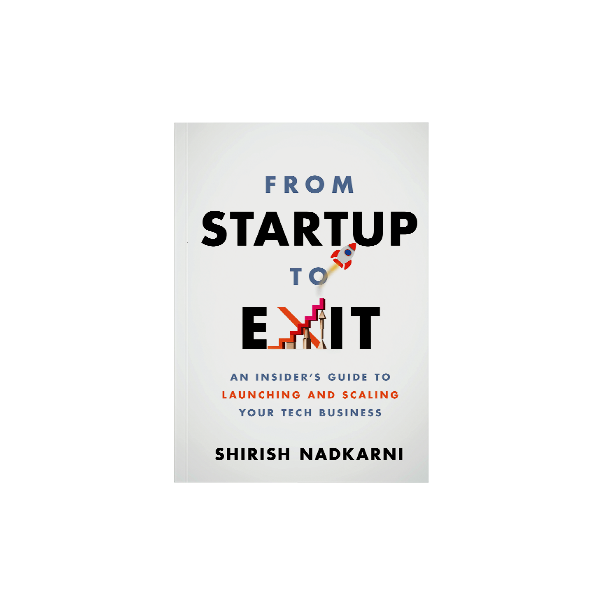Convertible notes are the most common form of funding that most startups use during the seed stage of funding. The main benefit of convertible notes is that they are relatively simple and inexpensive to implement compared to a full preferred equity round — typically costing $5,000 or so in legal fees. A full preferred round can cost in excess of $50,000 to execute which can be prohibitive if you raising less than $1 million in funding. There are also other inexpensive alternatives such as a SAFE and Series Seed that have become popular. I will discuss these other methods of funding in a future article.
Key Terms
A convertible note is essentially a debt instrument with a provision for automatic conversion to equity when the startup executes a full preferred round typically in excess of $1 million. Here are some of the key terms of a convertible note:
Interest: The note earns an interest rate typically of 6–8%. The investor doesn’t actually get interest. The interest accrues and is added to the principal when converting to equity. This means that if you raise $100,000 in a convertible note, after 1 year, $106,000 would be converted to equity if you raise a preferred round at that point.
Discount: Typically a note will include a 20% discount to the preferred share price at the next round valuation. I have seen higher discounts or the provision for warrants if the company is not able to raise funding in a certain period of time.
Valuation Cap: Even with the discount, most notes include a valuation cap e.g. not to exceed $4 million in valuation. So investors get the lower of the 20% discount or the valuation cap.
Term: This is typically set to between 1 to 2 years. However, generally it is fairly easy to get permission from investors to extend the period if you are not able to execute a preferred round prior to the end of the term.
Automatic Conversion to Equity: The note includes an automatic conversion to equity at a preferred round raise greater than $1 million. The investors get mostly the same terms as other investors in that round except for the valuation and other terms such as pro-rata rights (right to invest in future rounds) which is typically granted to major investors only.
The Hidden Traps
We have talked about the benefits of a note — simplicity and cost. There are also typically no control provisions or requirements for board seats. However, there are many downsides that most people are likely not aware of.
Lack of Visibility on Dilution: Since no shares are issued with a note, a note doesn’t show up in a cap table. As a result, founders don’t understand how much dilution they have suffered with a note until a full preferred round is raised. In addition, if the startup is not doing well, it will typically raise more money through additional notes which begin to pile up. When cap table is finally updated post a Series A raise, founders are typically quite surprised by how much equity they have given up in the company in total
Super Liquidation Preference: Most preferred rounds investors receive a 1x liquidation preference whereby they receive all their money first before any of the common shareholders in the event of a sale. Even though note holders get equity at a discount to new investors in a preferred round, they receive the same liquidation preference as that of new investors. As an example, let’s say a startup raised $1 million in a note at a valuation cap of $4 million and then subsequently raises $10 million in Series A funding at a $20 million pre-money valuation. The new investors who put in $10 million will receive $10 million in liquidation preference, however, the noteholders will receive $4 million in liquidation preference, not $1 million which is a 4x liquidation preference. So the company has to be sold for more than $14 million before the common shareholders receive any money at all! The only way to get around this problem is to issue the noteholders a combination of preferred and common shares so that their liquidation preference doesn’t exceed $1 million in this example — however, this is going to make the noteholders extremely unhappy.
Full Ratchet Anti-Dilution Provision: Most equity rounds today include what’s called a “broad based weighted average” anti-dilution provision. This means that if you raise a future round at a lower valuation, then existing investors get additional shares to compensate them for having invested at a higher valuation. However, the number of additional shares they get takes into account how much in new funding you have raised.
With a note, however, by agreeing to give a discount to a future round of funding, you are agreeing to essentially a “Full ratchet” anti-dilution provision which means that investors get to convert all the funds at the new valuation plus a 20% discount. So let’s say that you raised funding in the form of a note at a 20% discount and a $4 million valuation cap and then later raise a full equity round at a $3 million valuation, the note holders will get converted at 80%*$3 million valuation.
In reality, however, I think this is a moot issue. If you are unable to raise funding at higher valuation from the valuation cap that you have set for your note, it is highly unlikely that you will be able to raise any money at all.
Potential Loss of Control upon Non-payment: If you are unable to raise equity funding before the term of the note ends and are unable to pay back the noteholders, you are now at the mercy of the noteholders. Most of the time, your noteholders will allow you to extend the term of the note. However, there’s a small chance that they will force payment of the note. At that point, your primary fiduciary responsibility is to maximize payment to the noteholders which may force you to sell the IP of the company or sell the company before you ready to do so.
In practice, however, I not heard of any situations where the founders have been forced into bankruptcy or have lost control of their company. Most of the time, the company simply shuts down once the founders have run out of all options and the noteholders are left holding the bag.
……………………………..
If you liked this article, check out my book that covers all aspects of the entrepreneurial journey.

